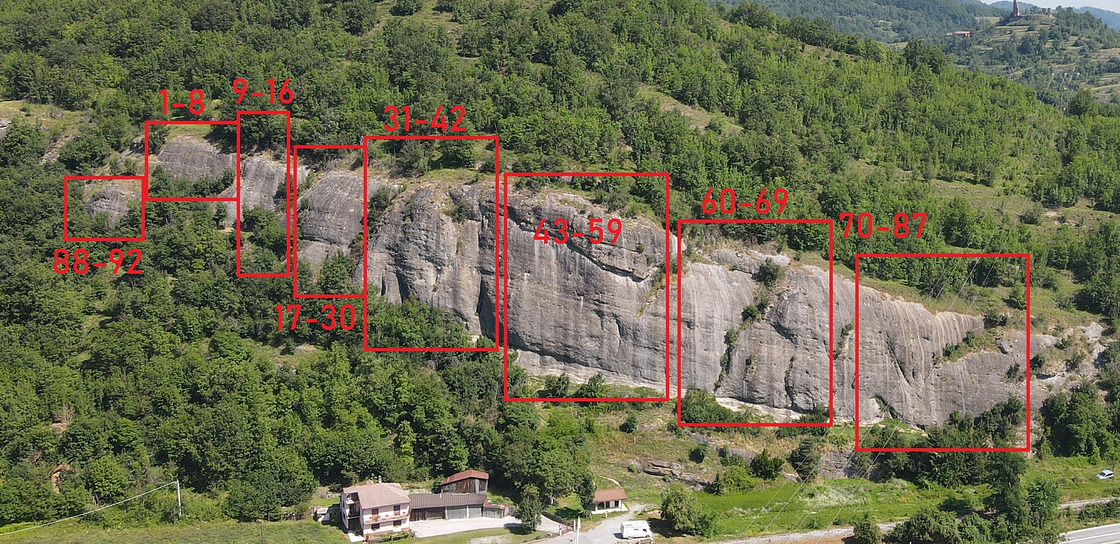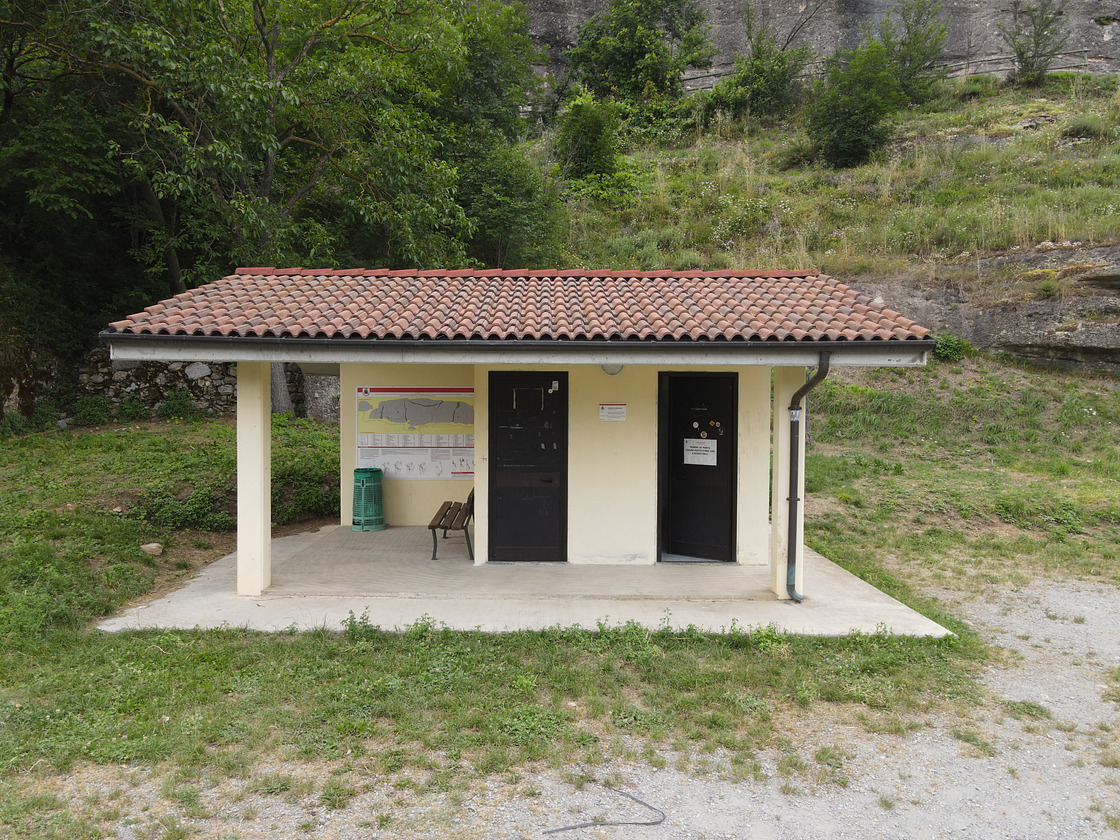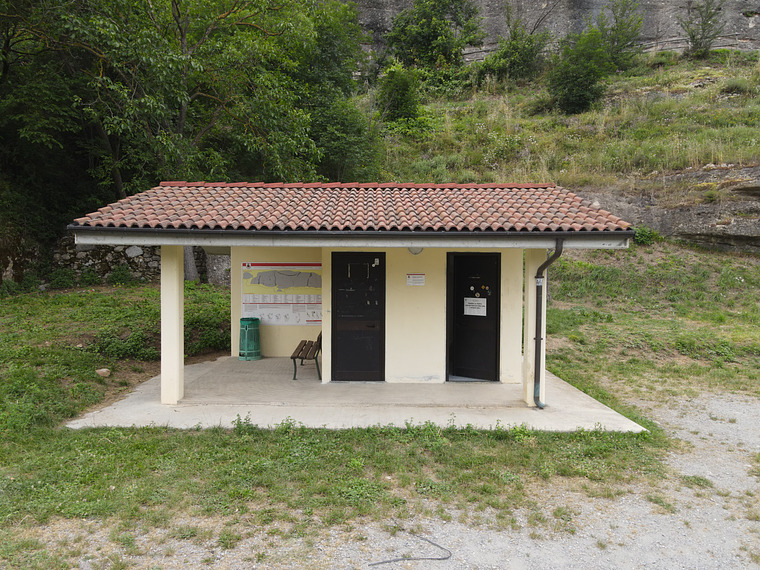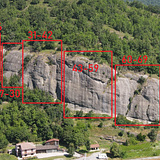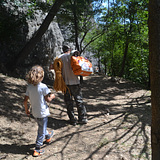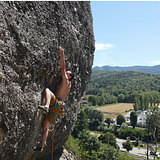☀️SUN DURING THE DAY: all day
🧭 EXPOSURE: E- S/E
🧱ROCK TYPE: The rock here is Conglomerate
📆 BEST PERIOD: Spring and autumn, winter is possible but could be very cold.
👪 FAMILY FRIENDLY: Yes
🇬🇧
⛰️ The characteristic rock of the Bagnasco cliff is a limestone conglomerate unique in Italy, similar only to geological formations present in Greece ("Le Meteore") and Spain ("Monserrat" area). The routes are mainly slabs and vertical walls, with small holds, crimps and holes. While it may seem unstable, the rock is actually solid and offers challenging "on-sight" climbing for beginners venturing to Bagnasco for the first time.
In recent years, the Bagnasco crag has enjoyed a resurgence in popularity, thanks to its accessibility and the constant cleaning of the base annually by the Bagnasco pro loco. Local climbers played a key role, dedicating their time and effort to fixing and re-fixing free of charge over 60% of the routes with stainless steel anchors, while the remaining sector was re-bolted by Matteo Canova, resulting in certification of the crag and all ways
Thanks to word of mouth and the publication of articles in mountain magazines, the Bagnasco crag has attracted climbers from all over Italy, especially in autumn and spring. A structure with toilets has recently been built and two lighthouses have been installed at the base of the wall to allow night climbing.
To make the most of climbing in Bagnasco, the ideal seasons are autumn and spring, when the crag enjoys an east-south/east exposure. During these periods, the weather conditions are generally favorable and the temperature is pleasant for climbing. Autumn offers spectacular colors and a soft light that makes the experience even more suggestive. In spring, however, nature awakes and the days are longer offering the opportunity to fully enjoy climbing.
However, it is possible to climb even during the summer, if some precautions are taken. It is advisable to climb in the afternoon after 4pm, when the sun starts to go down and the temperature drops slightly. Windy days can be another good opportunity to climb, as the breeze can cool the environment.
In winter, during sunny days, you can climb. However, it is important to know that the crag is in the shade from around 4pm, especially in December. Therefore, it is advisable to plan your climbs to make the most of the available daylight hours.
🇮🇹
⛰️ La roccia caratteristica della falesia di Bagnasco è un conglomerato di calcare unico in Italia, simile solo a formazioni geologiche presenti in Grecia ("Le Meteore") e in Spagna (zona del "Monserrat"). Le vie sono principalmente placche e verticali, con piccole prese, tacche e buchetti. Nonostante possa sembrare instabile, in realtà la roccia è solida e offre un'arrampicata impegnativa "a vista" per i principianti che si avventurano per la prima volta a Bagnasco.
Negli ultimi anni, la falesia di Bagnasco ha goduto di una rinascita di popolarità, grazie alla sua accessibilità e alla pulizia costante della base curata annualmente dalla pro loco di Bagnasco. Gli scalatori locali hanno svolto un ruolo fondamentale, dedicando il loro tempo e sforzo per fissare e rifissare gratuitamente oltre il 60% delle vie con ancoraggi in acciaio inossidabile, mentre il restante settore è stato riattrezzato da Matteo Canova, con conseguente certificazione della falesia e di tutte le vie
Grazie al passaparola e alla pubblicazione di articoli su riviste di montagna, la falesia di Bagnasco ha attirato scalatori da tutta Italia, soprattutto in autunno e primavera. Di recente è stata realizzata una struttura con servizi igienici e sono stati installati due fari luminosi alla base della parete per permettere l'arrampicata notturna.
Per sfruttare al meglio l'arrampicata a Bagnasco, le stagioni ideali sono l'autunno e la primavera, quando la falesia gode di un'esposizione orientata a est-sud/est. Durante questi periodi, le condizioni atmosferiche sono generalmente favorevoli e la temperatura è gradevole per scalare. L'autunno offre colori spettacolari e una luce soffusa che rende l'esperienza ancora più suggestiva. Nella primavera, invece, la natura si risveglia e le giornate si allungano, offrendo l'opportunità di godere appieno delle arrampicate.
Tuttavia, è possibile scalare anche durante l'estate, se si prendono alcune precauzioni. È consigliabile arrampicare nel pomeriggio dopo le 16, quando il sole inizia a scendere e la temperatura si abbassa leggermente. Le giornate ventose possono essere un'altra buona occasione per scalare, poiché la brezza può rinfrescare l'ambiente.
In inverno, durante le giornate di sole, si può scalare. Tuttavia, è importante tenere presente che la falesia si trova in ombra a partire dalle 16:00 circa, soprattutto nel mese di dicembre. Pertanto, è consigliabile pianificare le arrampicate in modo da sfruttare al massimo le ore di luce disponibili.
🇩🇪
⛰️ Der charakteristische Fels der Bagnasco-Klippe ist ein einzigartiger Kalkstein-Konglomerat in Italien, ähnlich nur den geologischen Formationen in Griechenland ("Meteora") und in Spanien (Bereich von "Montserrat"). Die Routen bestehen hauptsächlich aus Platten und senkrechten Abschnitten mit kleinen Griffen, Löchern und Einkerbungen. Obwohl es möglicherweise instabil erscheint, ist der Fels tatsächlich fest und bietet eine anspruchsvolle "On-Sight" -Klettererfahrung für Anfänger, die sich zum ersten Mal nach Bagnasco wagen.
In den letzten Jahren hat die Bagnasco-Klippe aufgrund ihrer Zugänglichkeit und der regelmäßigen Reinigung der Basis, die jährlich von der Pro Loco von Bagnasco durchgeführt wird, an Popularität gewonnen. Einheimische Kletterer haben eine wichtige Rolle gespielt, indem sie ihre Zeit und Anstrengung investierten, um über 60% der Routen mit rostfreien Edelstahlankern kostenlos zu setzen und zu erneuern, während der verbleibende Bereich von Matteo Canova neu ausgerüstet wurde, was zur Zertifizierung der Klippe und aller Routen führte.
Durch Mundpropaganda und Veröffentlichungen in Bergmagazinen hat die Bagnasco-Klippe Kletterer aus ganz Italien angezogen, besonders im Herbst und Frühling. Kürzlich wurde eine Toilettenanlage errichtet und zwei Beleuchtungstürme am Fuß der Wand installiert, um nächtliches Klettern zu ermöglichen.
Um das Klettern in Bagnasco optimal zu nutzen, sind Herbst und Frühling die besten Jahreszeiten, wenn die Klippe nach Osten-Südosten ausgerichtet ist. Während dieser Zeiträume sind die Wetterbedingungen im Allgemeinen günstig und die Temperaturen sind angenehm zum Klettern. Der Herbst bietet spektakuläre Farben und sanftes Licht, das das Erlebnis noch eindrucksvoller macht. Im Frühling erwacht die Natur und die Tage werden länger, was die Möglichkeit bietet, das Klettern in vollen Zügen zu genießen.
Jedoch ist es auch im Sommer möglich zu klettern, wenn einige Vorsichtsmaßnahmen getroffen werden. Es wird empfohlen, am Nachmittag nach 16 Uhr zu klettern, wenn die Sonne beginnt zu sinken und die Temperaturen leicht abkühlen. Windige Tage können eine weitere gute Gelegenheit zum Klettern sein, da die Brise für Abkühlung sorgen kann.
Im Winter kann bei sonnigen Tagen ebenfalls geklettert werden. Es ist jedoch wichtig zu beachten, dass die Klippe ab etwa 16:00 Uhr im Schatten liegt, besonders im Dezember. Daher ist es ratsam, die Kletteraktivitäten so zu planen, dass die verfügbaren Tageslichtstunden optimal genutzt werden.
